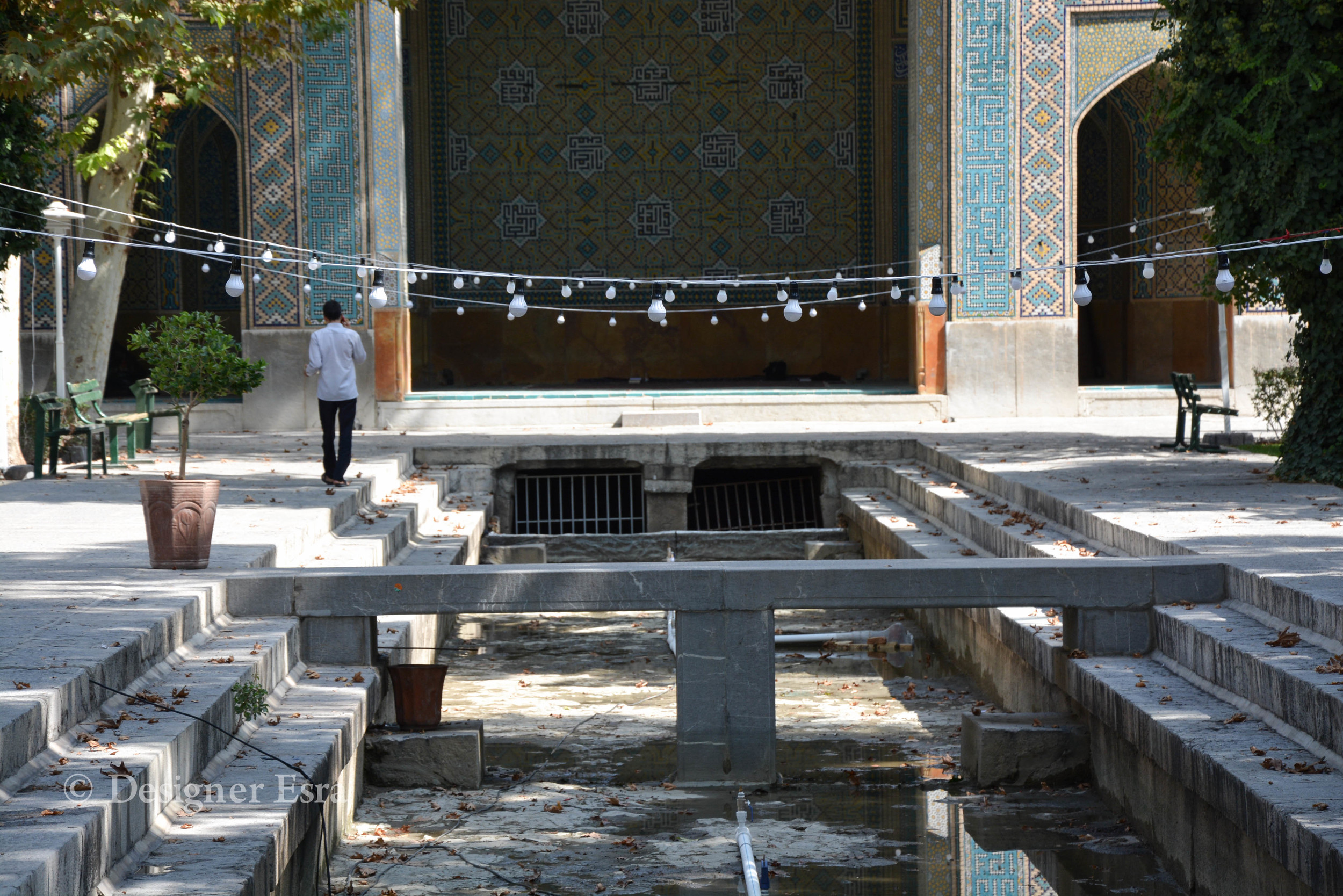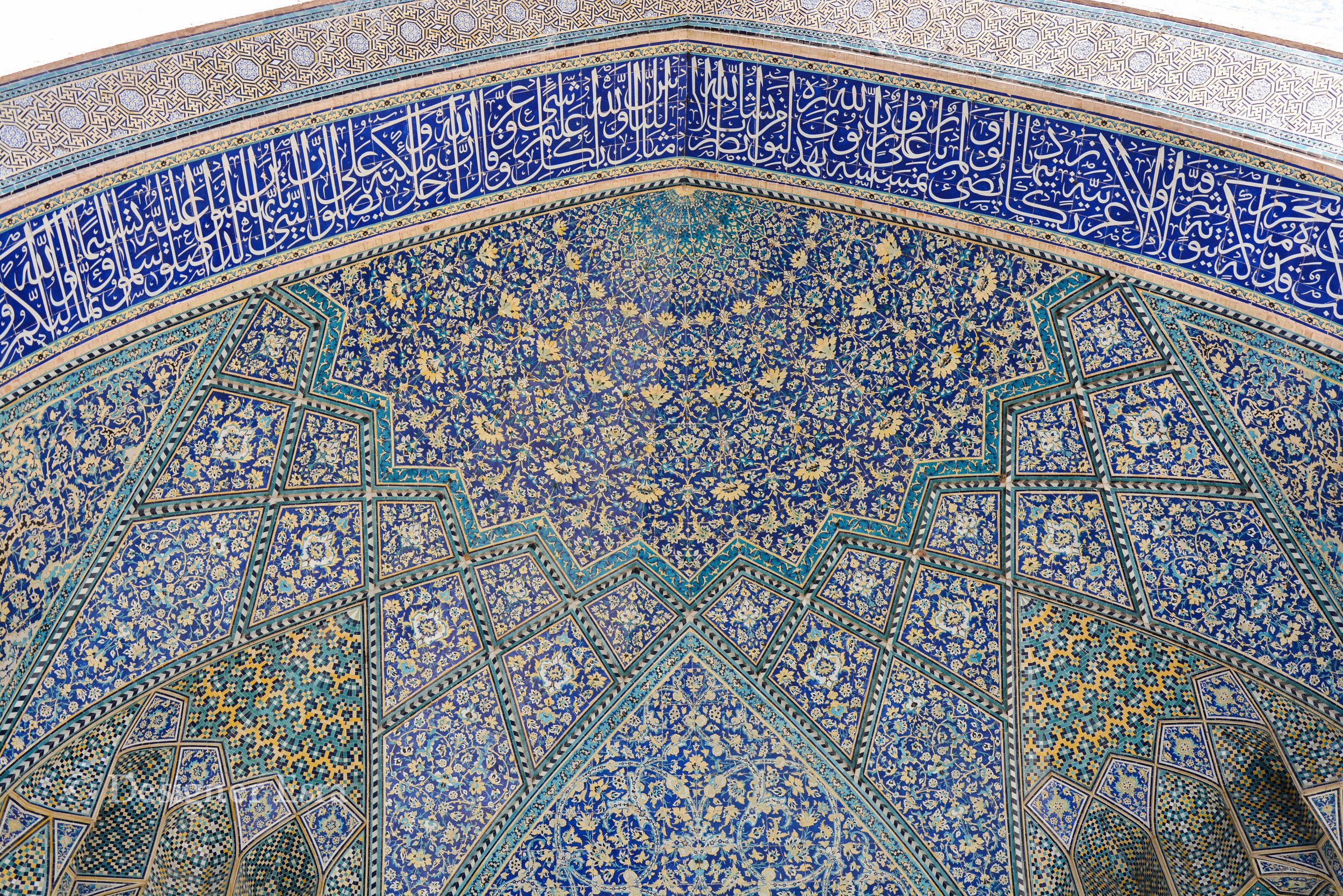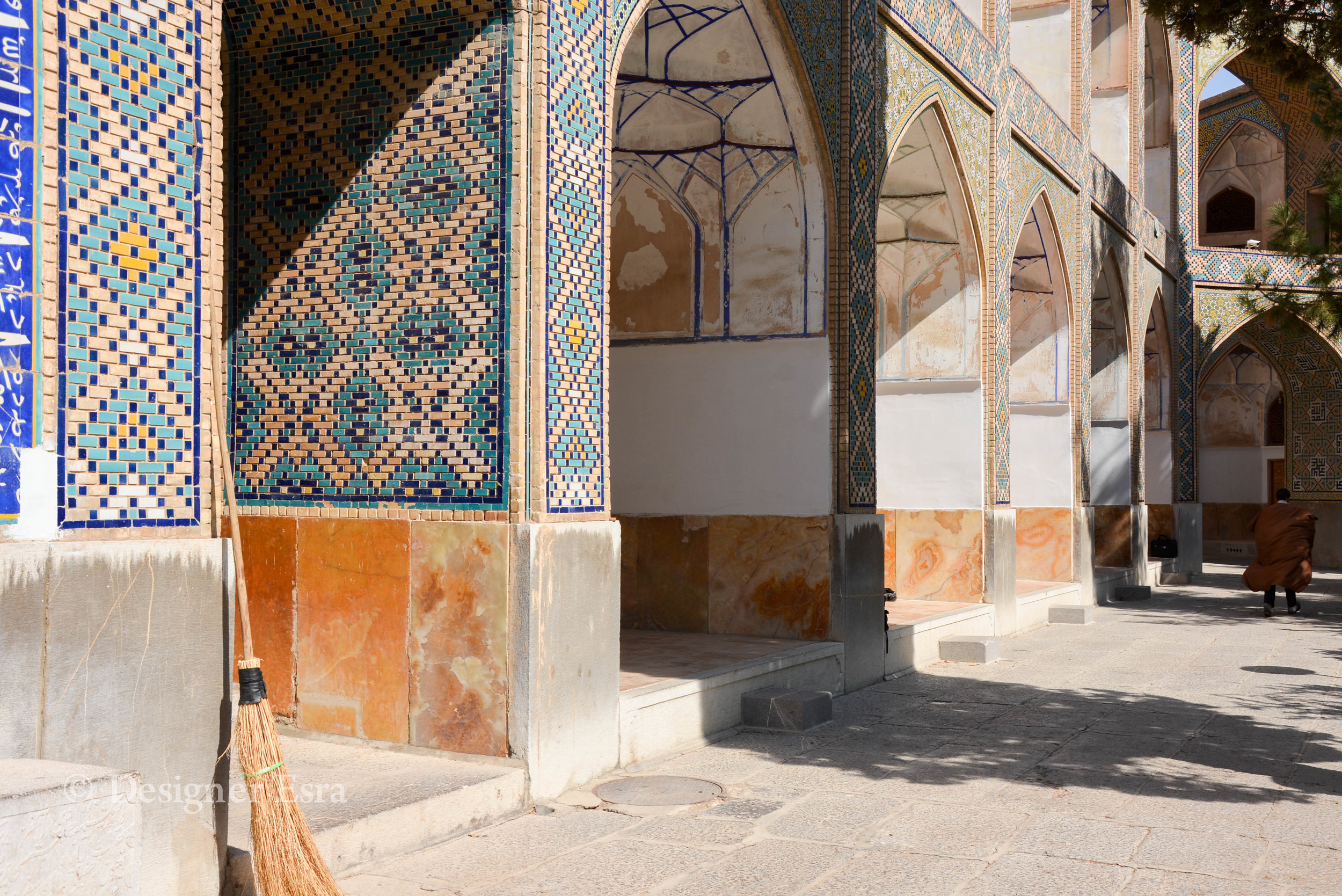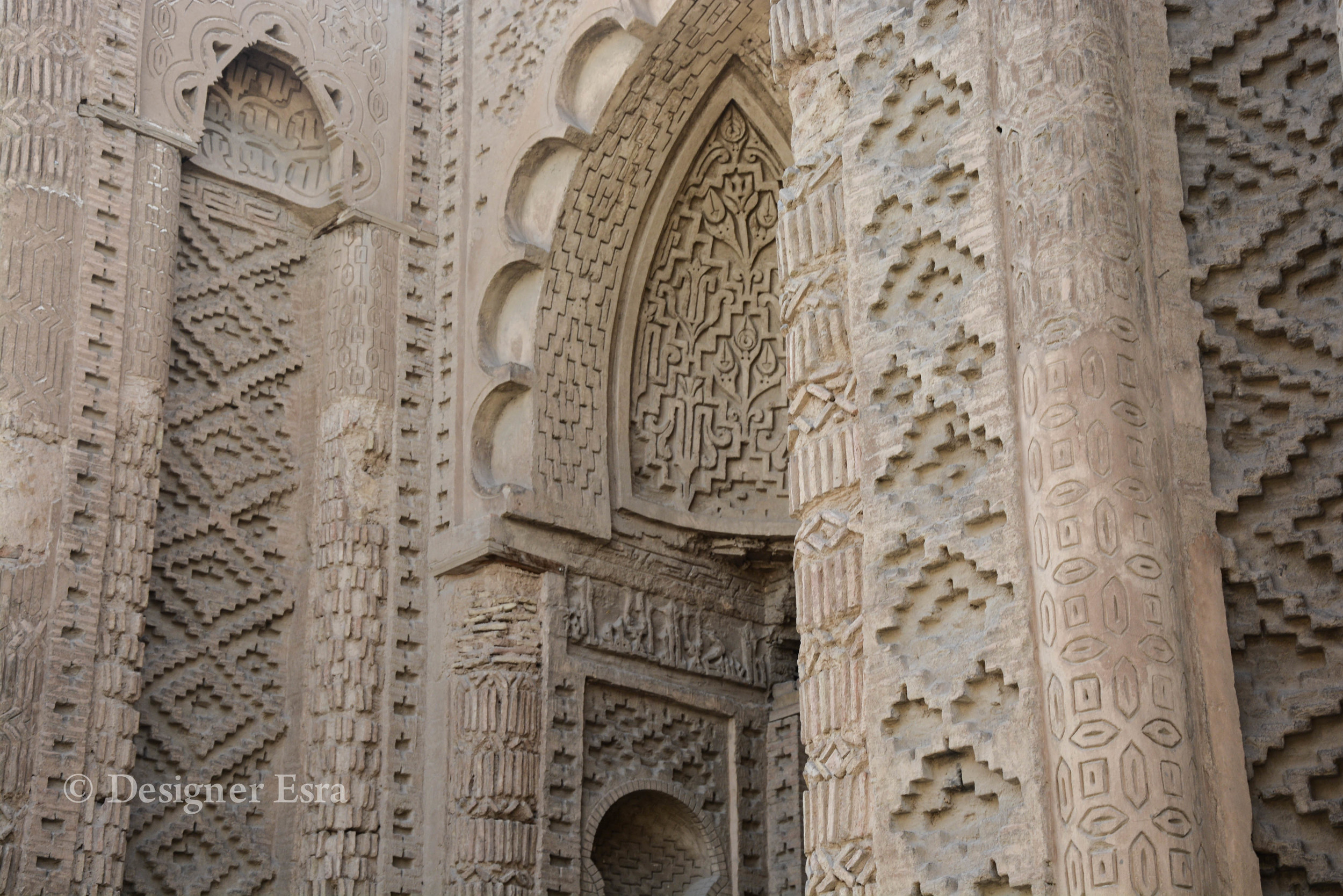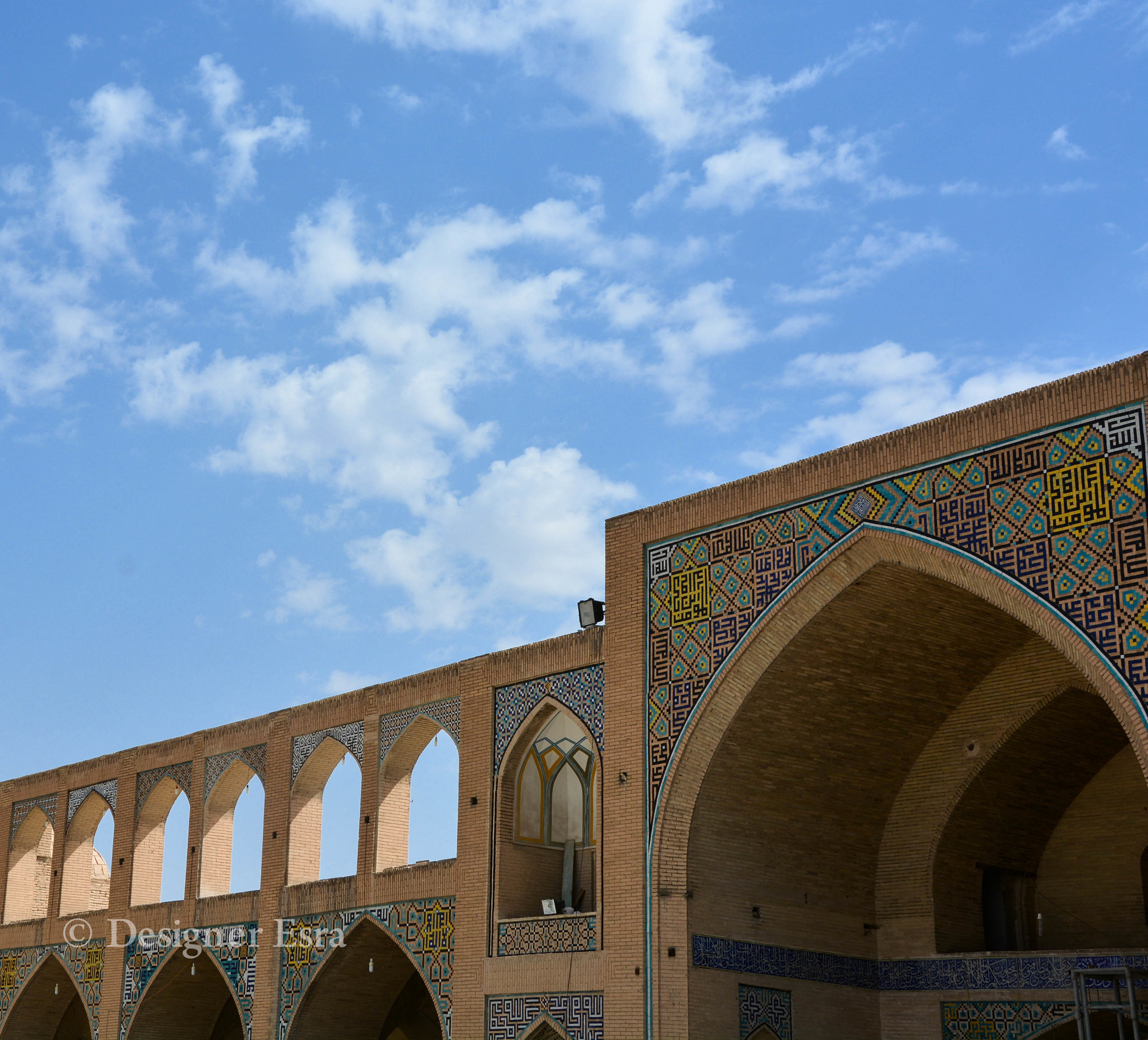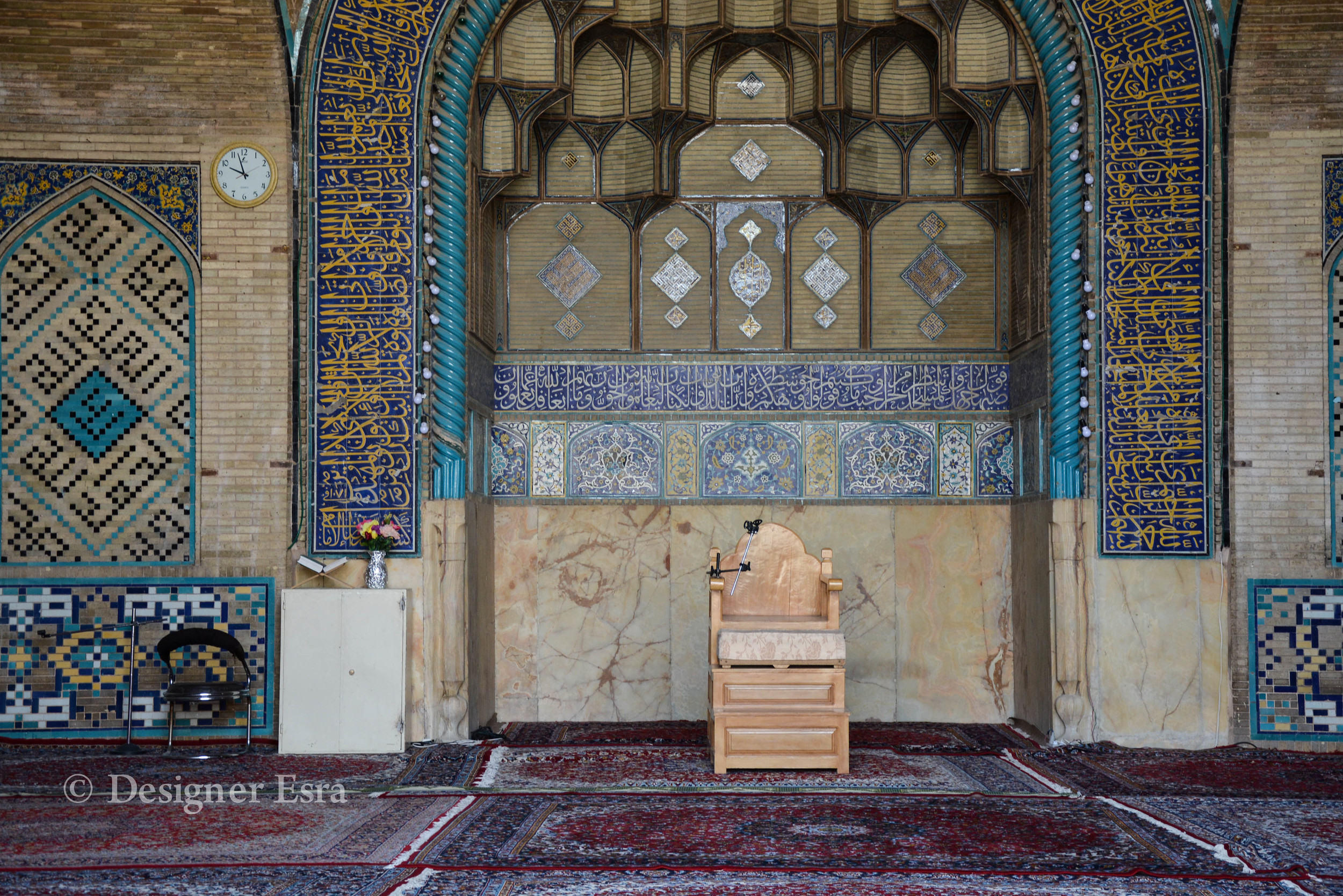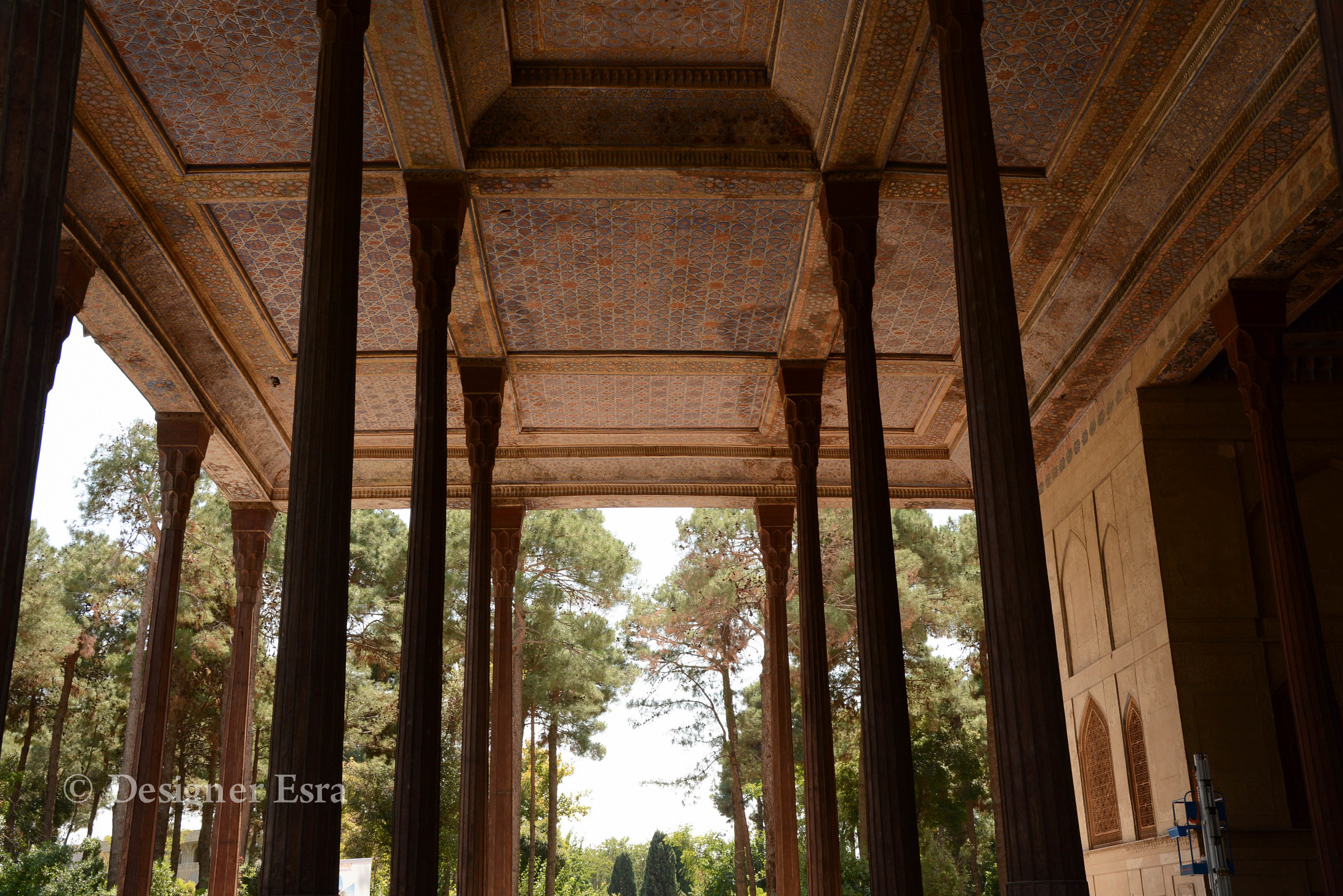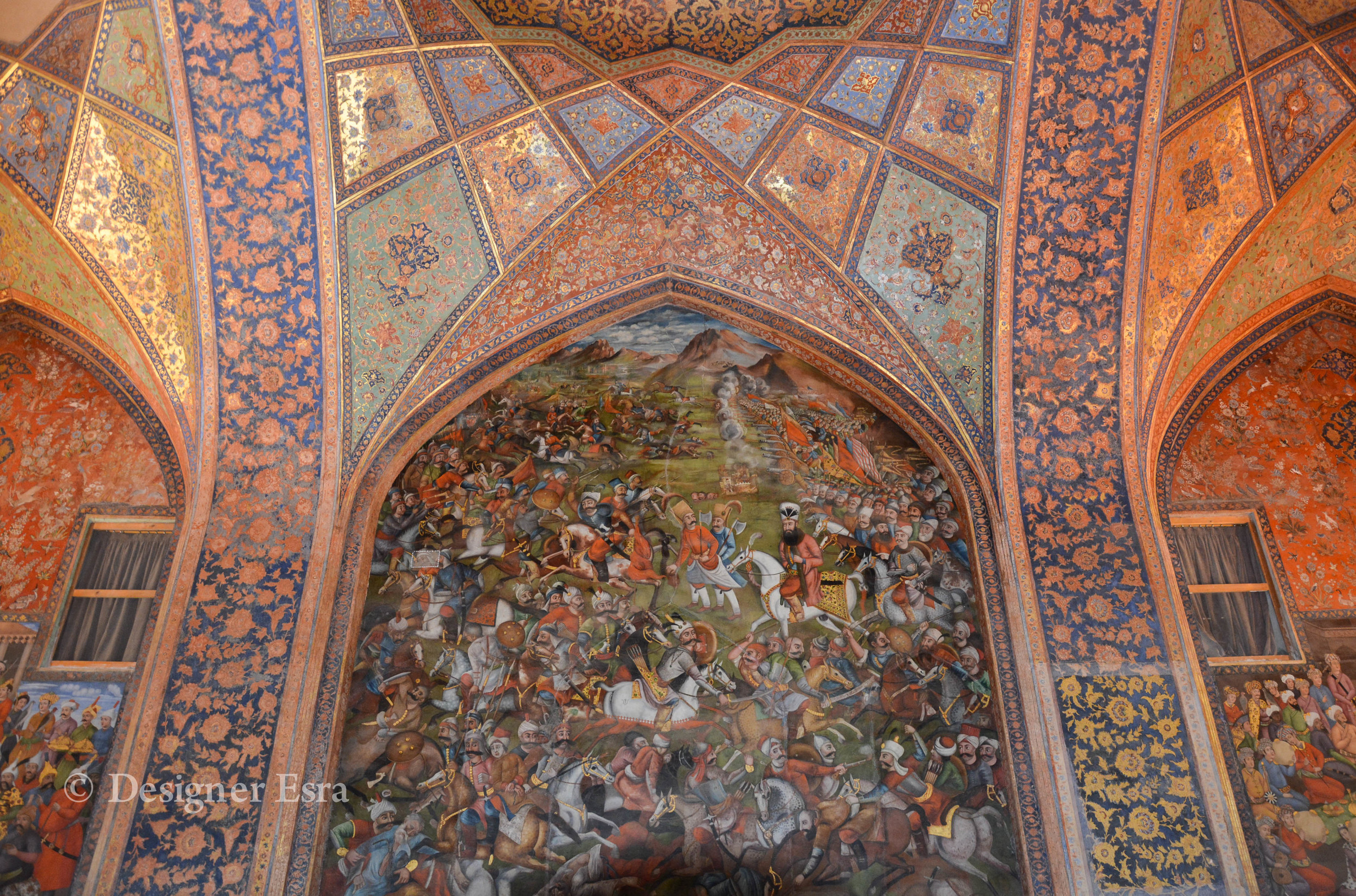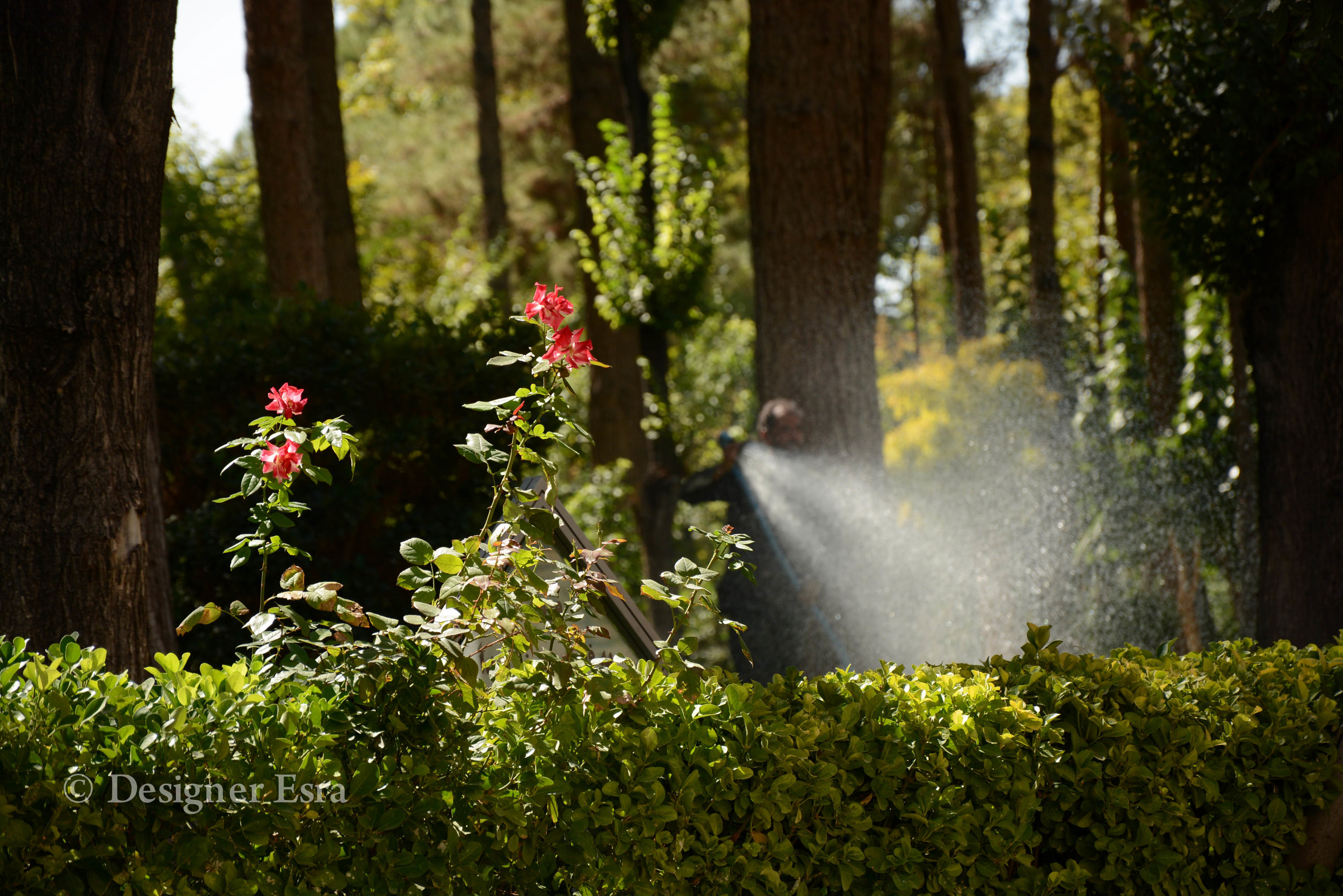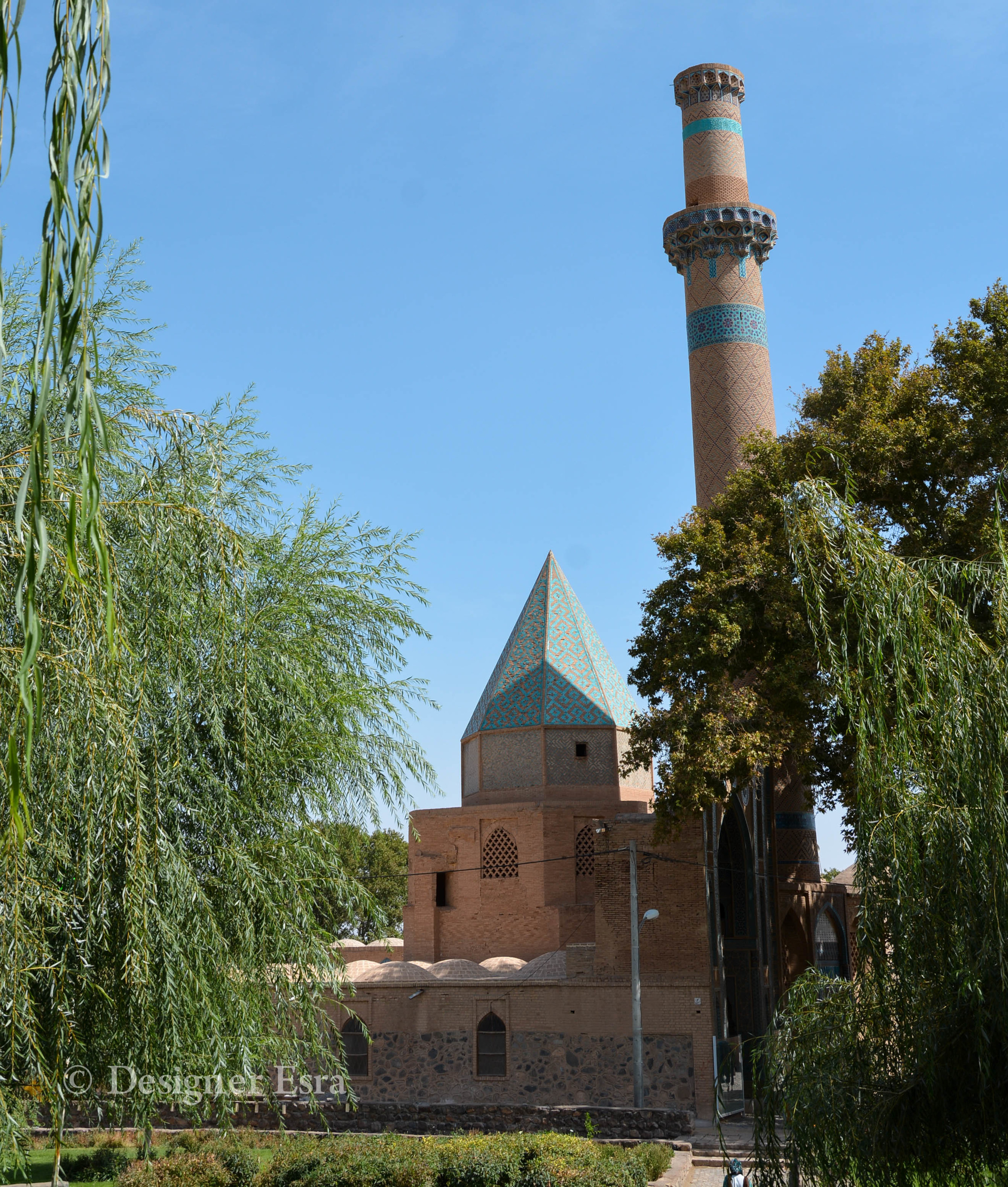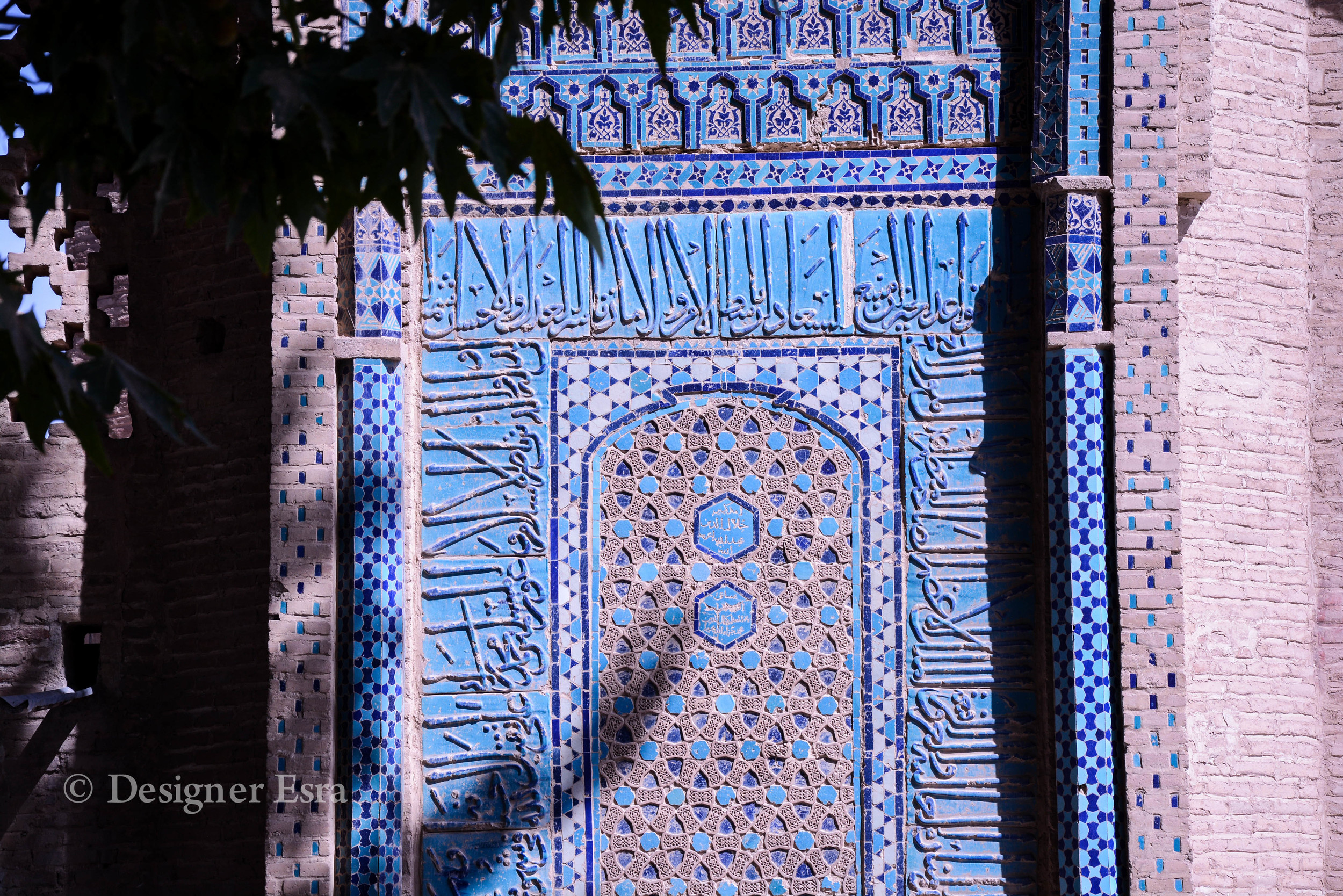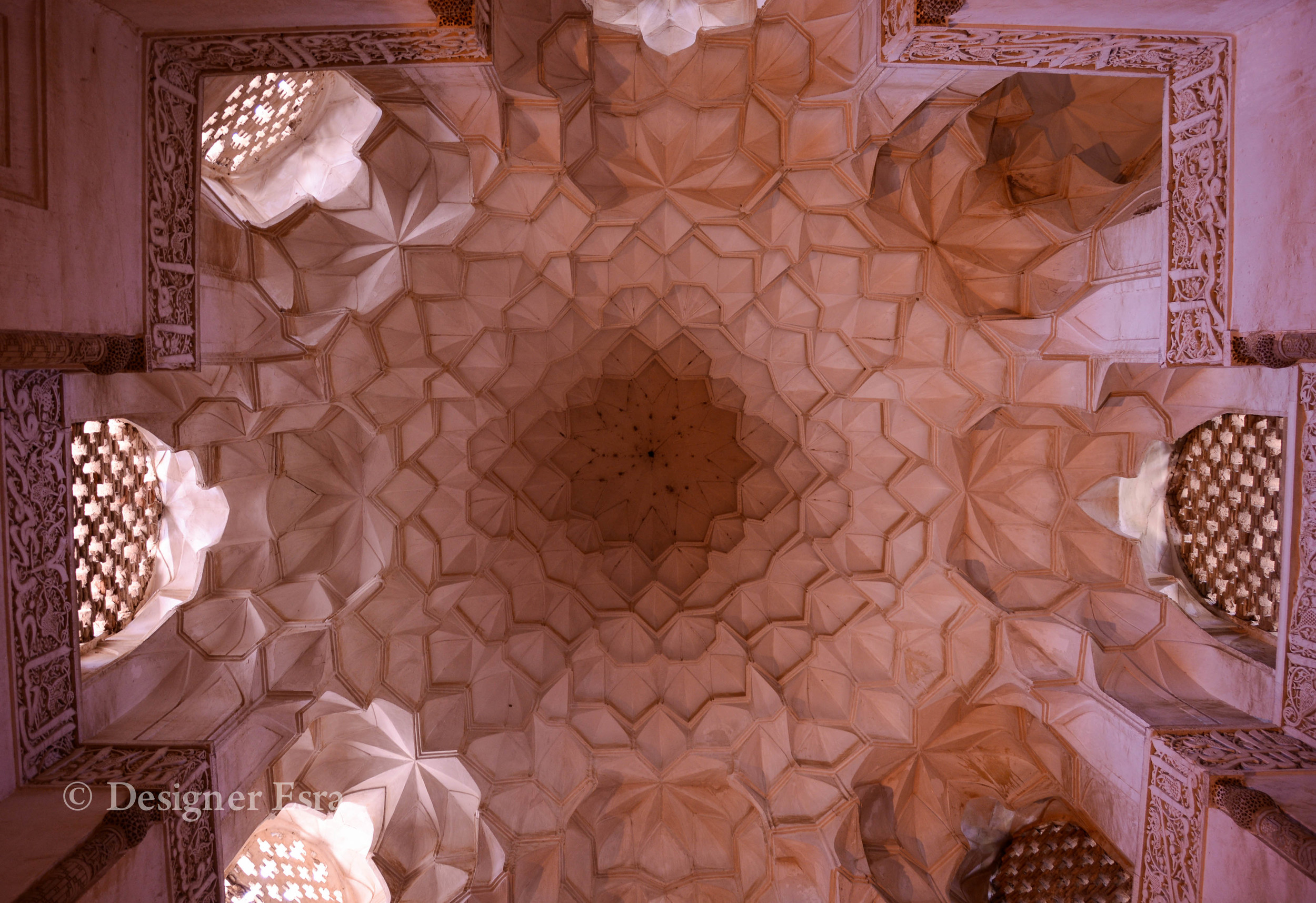Esfahan is full of beautiful sights and patterns. These are the rest of the sights I visited when I was there. We started with a Madrasa, religious school, on the way to the main square and it was filled with detailed interact patterns and Islamic geometry. It is still a fully functioning school. They were very welcoming and we enjoyed the serenity of the space.
During the stay in Esfahan, we also visited the Hakim Mosque, which was commissioned by a doctor (Hakim) hence the name. It is one of the oldest mosques in the city. It dates back to 1648. The carved facade makes this mosque very special. It is still used fully for prayers and religious gatherings to this day. We spent some time with graph paper, copying some of the wall designs. They were stunning! Read more about the mosque on ARCHNet.
What makes Esfahan really interesting is the variety of adorned sites. We got to see schools, mosques, palaces and gardens. One of them was the Chehal Sutton (Palace and garden). Chehel Sotoun means 40 columns. There are 20 built ones and 20 reflected in the water. the number 40 is very significant in Islam. The mix of nature and genius human design was spot on. I loved every bit of that day.
When we were leaving Esfahan, we stopped by Natanz, where 'Abd al-Samad, a shaykh of the Suharwardi Sufi order is buried. The patterns in this place were one of the oldest. My teacher Paul Merchant was extremely humbled and amazed by them. The overall architecture is unusual and worth visiting. Read more on ARCHNet.
